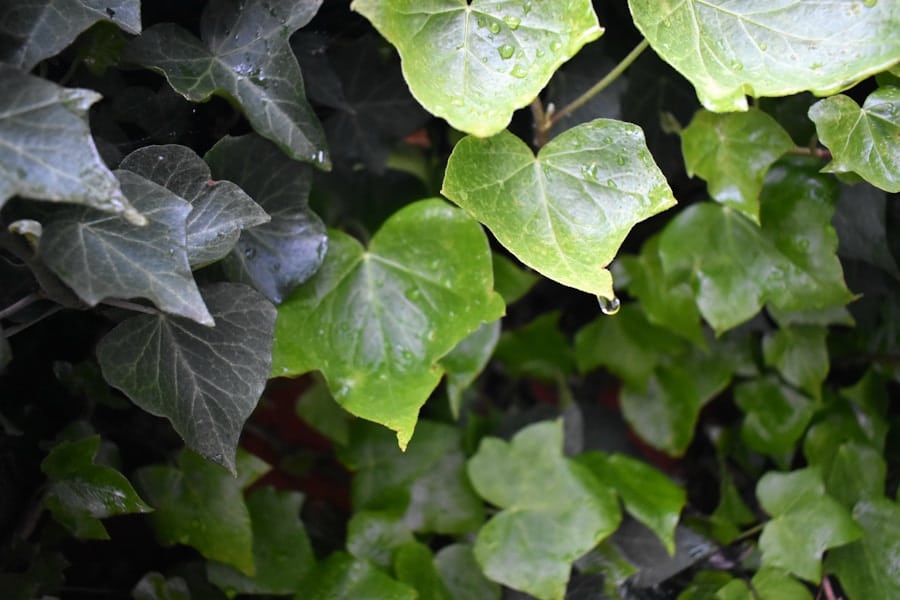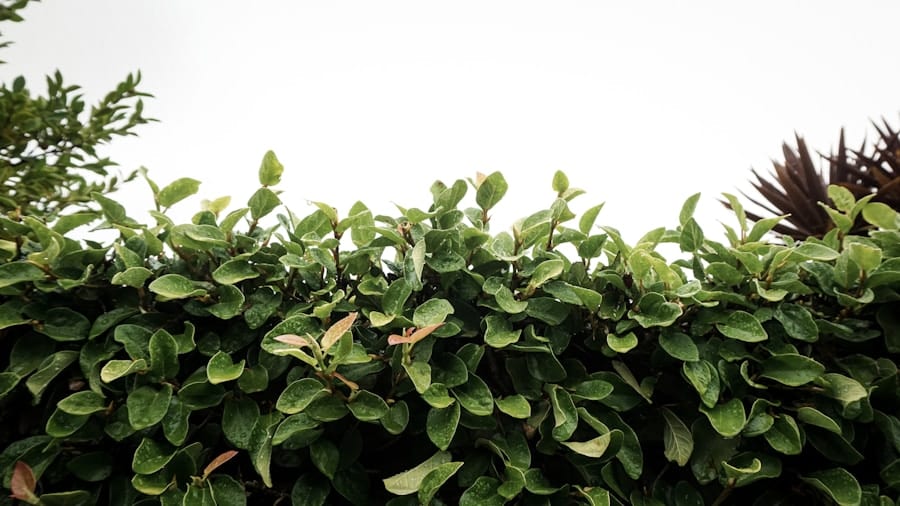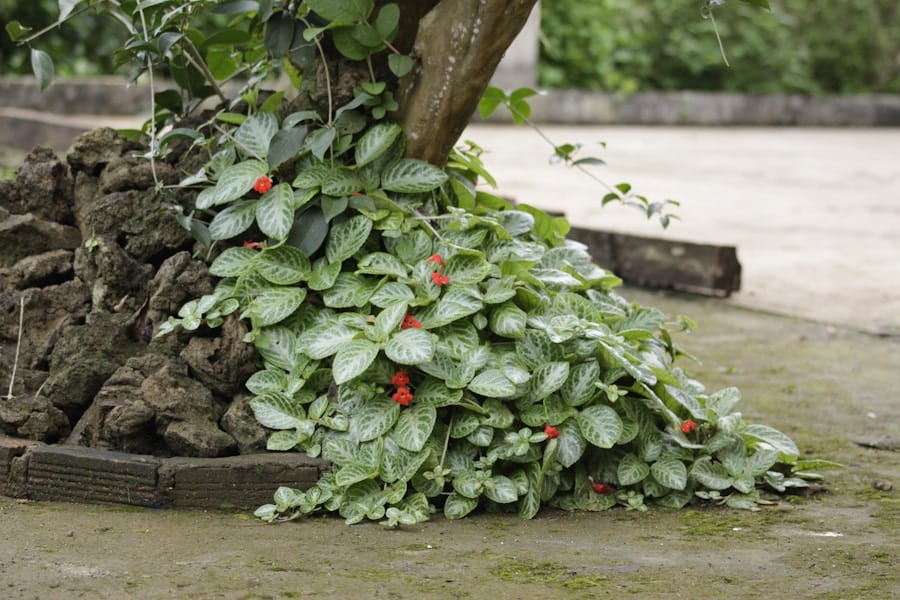Ivy plants, particularly those belonging to the Hedera genus, are popular choices for both indoor and outdoor gardening due to their lush foliage and adaptability. However, to ensure that these plants thrive, understanding their fertilization needs is crucial. Fertilization plays a vital role in providing essential nutrients that ivy plants require for healthy growth, vibrant leaves, and overall vitality.
Nitrogen is essential for leaf growth and overall plant vigor, phosphorus supports root development and flowering, while potassium aids in overall plant health and disease resistance. The timing and method of fertilization can significantly impact the health of ivy plants.
Generally, ivy plants benefit from fertilization during the growing season, which typically spans from spring to early fall. During this period, the plants are actively growing and can utilize the nutrients effectively. Conversely, fertilizing during the dormant winter months can lead to nutrient buildup in the soil, which may harm the plant.
Additionally, understanding the specific needs of different ivy varieties is important; for instance, English ivy may have different nutrient requirements compared to Algerian or Irish ivy. Therefore, a tailored approach to fertilization can lead to more robust and resilient ivy plants. Check out the latest fertilizers for your garden at Soil Compost.
Key Takeaways
- Ivy plants require regular fertilization to thrive and maintain their health
- Organic fertilizers, such as compost and manure, provide natural nutrients for ivy plants
- Synthetic fertilizers, like 10-10-10 or 20-20-20, offer a quick nutrient boost for ivy plants
- Slow-release fertilizers, such as granular or spike forms, provide a steady nutrient supply over time
- Liquid fertilizers, like fish emulsion or seaweed extract, offer a fast-acting nutrient solution for ivy plants
Organic Fertilizers for Ivy Plants
Organic fertilizers are derived from natural sources and are an excellent choice for those looking to cultivate healthy ivy plants while minimizing environmental impact. These fertilizers improve soil structure and promote beneficial microbial activity, which can enhance nutrient availability for the plants. Common organic fertilizers suitable for ivy include compost, well-rotted manure, and fish emulsion.
Compost is particularly beneficial as it not only provides essential nutrients but also improves soil aeration and moisture retention. When applied to the soil around ivy plants, compost can create a rich environment that fosters healthy root development. Fish emulsion is another popular organic option that is high in nitrogen, making it ideal for promoting lush foliage in ivy plants.
It is typically diluted with water before application and can be used as a foliar spray or soil drench. This method allows the plant to absorb nutrients quickly through its leaves or roots. Additionally, organic fertilizers release nutrients slowly over time, reducing the risk of nutrient leaching and ensuring a steady supply of nourishment for the ivy.
By incorporating organic fertilizers into their care routine, gardeners can cultivate vibrant ivy plants that are not only beautiful but also environmentally friendly.
Synthetic Fertilizers for Ivy Plants

Synthetic fertilizers are chemically manufactured products designed to provide specific nutrients to plants in concentrated forms. These fertilizers often contain higher concentrations of N-P-K compared to organic options, allowing for rapid nutrient uptake by ivy plants. For instance, a synthetic fertilizer with an N-P-K ratio of 10-10-10 can deliver a balanced supply of nitrogen, phosphorus, and potassium, promoting vigorous growth and lush foliage.
Gardeners may find synthetic fertilizers particularly useful when quick results are desired or when dealing with nutrient-deficient soils. However, while synthetic fertilizers can provide immediate benefits, they also come with certain drawbacks. One significant concern is the potential for nutrient runoff into waterways, which can lead to environmental issues such as algal blooms.
Additionally, over-reliance on synthetic fertilizers can lead to soil degradation over time, as they do not contribute organic matter or improve soil health in the same way that organic fertilizers do. Therefore, it is essential for gardeners to use synthetic fertilizers judiciously and in conjunction with other soil health practices to maintain a balanced ecosystem in their gardens.
Slow-Release Fertilizers for Ivy Plants
| Brand | Nutrient Content | Release Period | Application Frequency |
|---|---|---|---|
| Scotts Turf Builder | 24-25-4 (N-P-K) | 2 months | Every 8 weeks |
| Osmocote Smart-Release Plant Food | 14-14-14 (N-P-K) | 4 months | Every 16 weeks |
| Miracle-Gro Shake ‘n Feed | 10-10-4 (N-P-K) | 3 months | Every 12 weeks |
Slow-release fertilizers are designed to release nutrients gradually over an extended period, providing a steady supply of nourishment to ivy plants without the risk of over-fertilization. These fertilizers are particularly beneficial for gardeners who may not have the time or inclination to fertilize frequently. Slow-release formulations often come in granular form and can be mixed into the soil at planting or applied as a top dressing around established plants.
The slow release of nutrients aligns well with the growing season of ivy plants, ensuring they receive consistent nourishment when they need it most. One popular type of slow-release fertilizer is coated granules that dissolve slowly in response to moisture levels in the soil. This means that as the soil becomes moist from watering or rainfall, the nutrients are released gradually, reducing the risk of nutrient leaching and ensuring that ivy plants have access to essential elements over time.
Additionally, slow-release fertilizers can help mitigate the stress on plants during periods of drought or heat by providing a consistent nutrient supply without overwhelming them with excess fertilizer at once.
Liquid Fertilizers for Ivy Plants
Liquid fertilizers offer a versatile option for feeding ivy plants, allowing for quick absorption of nutrients through both soil and foliage. These fertilizers are typically diluted with water before application and can be used as a foliar spray or soil drench. Liquid fertilizers are particularly effective during the active growing season when ivy plants are most receptive to nutrient uptake.
For instance, a liquid fertilizer high in nitrogen can promote lush green growth in English ivy during its peak growth phase. One advantage of liquid fertilizers is their ability to provide immediate results; plants often show signs of improved health within days of application. This rapid response makes liquid fertilizers an excellent choice for addressing specific nutrient deficiencies or for giving a boost to struggling plants.
However, it is essential to follow dilution instructions carefully to avoid over-fertilization, which can lead to leaf burn or other adverse effects. Regular monitoring of plant health and adjusting fertilizer applications accordingly can help ensure that ivy plants receive optimal nutrition without the risk of damage.
Fertilizer Application Tips for Ivy Plants

Application Methods Matter
It is essential to follow manufacturer guidelines regarding dosage and frequency when applying fertilizer to ivy plants. Over-fertilizing can lead to nutrient buildup in the soil, which may harm the plant’s roots and overall health. For granular fertilizers, spreading them evenly around the base of the plant and lightly incorporating them into the top layer of soil can help ensure even distribution.
Using Liquid Fertilizers
For liquid fertilizers, applying them during watering sessions can help dilute the concentration and reduce the risk of root burn while ensuring that nutrients reach the root zone effectively.
Avoiding Common Mistakes
By following these guidelines, you can help ensure that your plants receive the necessary nutrients to thrive. Remember to avoid over-fertilizing, as this can lead to more harm than good.
Common Mistakes to Avoid When Fertilizing Ivy Plants
Fertilizing ivy plants requires careful attention to detail; several common mistakes can hinder their growth or even cause damage. One prevalent error is applying fertilizer too frequently or in excessive amounts. Many gardeners mistakenly believe that more fertilizer equates to better growth; however, this can lead to nutrient imbalances and root burn.
It is crucial to adhere to recommended application rates and schedules based on the specific fertilizer being used. Another common mistake is neglecting soil testing before fertilization. Without understanding the existing nutrient levels in the soil, gardeners may inadvertently apply unnecessary fertilizers or fail to address specific deficiencies.
Conducting a soil test can provide valuable insights into pH levels and nutrient availability, allowing for more informed fertilization decisions tailored to the needs of the ivy plant. Additionally, failing to consider environmental factors such as temperature and humidity can impact how well ivy plants absorb nutrients; thus, adjusting fertilization practices based on these conditions is essential for optimal growth.
Choosing the Best Fertilizer for Your Ivy Plant
Selecting the best fertilizer for your ivy plant involves considering several factors including plant variety, growth stage, and specific nutrient needs. For instance, if you are nurturing a young English ivy plant that is still establishing its root system, a balanced fertilizer with equal parts nitrogen, phosphorus, and potassium may be ideal for promoting overall growth. Conversely, if you have an established plant that appears leggy or pale, a nitrogen-rich fertilizer could help stimulate lush foliage.
Additionally, personal preferences regarding organic versus synthetic options will influence your choice of fertilizer. Organic fertilizers may be more suitable for those who prioritize sustainability and soil health, while synthetic options might appeal to gardeners seeking rapid results or dealing with specific nutrient deficiencies. Ultimately, understanding your ivy plant’s unique requirements and monitoring its response to fertilization will guide you in selecting the most effective fertilizer for fostering healthy growth and vibrant foliage.
If you are looking for the best fertilizer for ivy plants, you may also be interested in learning how to propagate prickly pear. This article provides a comprehensive guide on how to successfully propagate prickly pear plants, allowing you to expand your garden with beautiful succulents. Check out the article here for more information.
FAQs
What is the best fertilizer for ivy plants?
The best fertilizer for ivy plants is a balanced, water-soluble fertilizer with an N-P-K ratio of 20-20-20 or 10-10-10. This will provide the necessary nutrients for healthy growth.
How often should I fertilize my ivy plants?
Ivy plants should be fertilized every 4-6 weeks during the growing season, which is typically spring and summer. Avoid fertilizing in the fall and winter when the plant is dormant.
Should I use organic or synthetic fertilizer for ivy plants?
Both organic and synthetic fertilizers can be used for ivy plants. Organic fertilizers provide nutrients slowly over time, while synthetic fertilizers provide a quick nutrient boost. Choose the type that best fits your gardening preferences.
Can I use a slow-release fertilizer for my ivy plants?
Yes, slow-release fertilizers can be used for ivy plants. These types of fertilizers release nutrients gradually over an extended period, reducing the need for frequent applications.
How should I apply fertilizer to my ivy plants?
Fertilizer should be applied according to the instructions on the product label. Generally, it is best to dilute the fertilizer in water and apply it to the soil around the base of the plant. Avoid getting fertilizer on the foliage, as this can cause damage.

